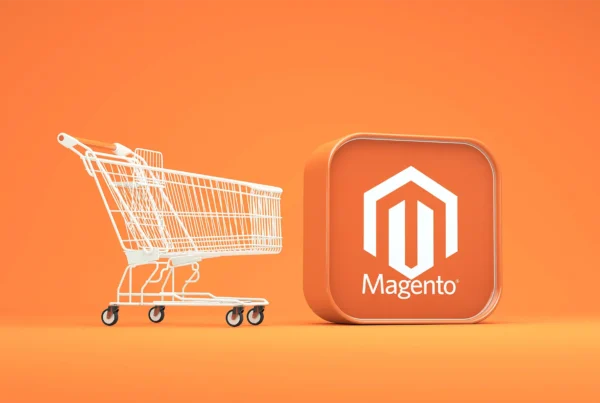
In 1989, filmmaker Robert Zemeckis teased us with flying cars and other futuristic gadgets in Back to the Future II when his character, Marty McFly, visits the future – 2015 to be exact. Well, it’s 2022, and cars are not literally flying down the highway. However, technology is advancing and constantly evolving how we live and work. Although today’s tech doesn’t have us racing across the sky yet, it is influencing digital marketing trends in a big way.
As digital marketing strategists, we’re fascinated by technology’s influence on the business of marketing. So much so that we’ve been obsessively tracking today’s most relevant marketing trends using advanced technology, which is the topic of this blog post. We’re unraveling how AI and AR/VR marketing are changing the future of marketing, including how brands can find, attract, and engage customers online.
Most Relevant Upcoming Marketing Trends
Today’s digital landscape is fast-paced, ever-evolving, and highly competitive. Digital Marketers are always looking for new ways to engage customers online, accelerate brand growth, and create the customized experiences consumers expect. Enter ”intelligent” technologies, which are disrupting and revolutionizing the digital marketing landscape more than ever, and brands that aren’t keeping pace may find themselves left behind.
Among the most relevant marketing trends gaining popularity with digital growth seekers are three technologies: AI (artificial intelligence), VR (virtual reality), and AR (augmented reality). Marketers across industries are already using these tools to ignite online engagement and fuel brand growth as today’s consumers increasingly prefer – even expect – customized digital experiences.
Important Role of Artificial Intelligence (AI) in Marketing
By definition, AI involves various systems or machines that mimic human intelligence to perform tasks while simultaneously learning (i.e., machine learning) and adapting to improve performance. AI, in general, is intended to enhance human capabilities and contributions, not replace humans in some Terminator-style world domination. Today’s AI marketing manifests in many forms, often undetected by users. For example, when Netflix nails your “Top Picks For (You)” lineup like it’s reading your mind and state of mind? That’s a great example of machine learning in marketing at work.
AI in marketing, especially digital marketing, allows brands to improve the customer journey through automated tasks, and its applications continue to advance every day. In fact, marketers’ use of AI soared between 2018 and 2020, jumping from 29% in 2018 to 84% in 2020, according to Salesforce Research’s 2020 State of Marketing Study.
As brands contend with an increasingly digital-first consumer mindset, the role of AI in digital marketing is set to reach new heights in the next few years. Following are the six trends we have our eye on as AI and machine learning in digital marketing continues to improve the methods and accuracy of targeting, reaching, and engaging online consumers.
Content Generation
Content generation is an AI use case in marketing that includes creating both short and long pieces of content for a marketing strategy, such as video captions, email subject lines, web copy, blogs, and more. However, AI isn’t (yet) able to emulate a human’s empathy, compassion, and storytelling, which are attributes great content often boasts. Will AI get there someday? Maybe – probably yes, someday.
Enhanced Digital Advertising
AI-enhanced digital advertising is all about reaching the right people at the right time based on continuous data collection. These learning-adaptive AI systems operate autonomously, placing the right kinds of ads in front of the right kinds of people based on lightning-speed analysis of big data using complex algorithms.
This is what’s known as “programmatic advertising” – and it’s at the forefront of AI marketing trends. Thanks to AI in digital marketing, advertisers can create more personalized experiences, target the right audience, and make decisions faster. This is one of the AI marketing trends we think is just getting started and will continue to balloon over the next few years – lending targeted digital ad campaigns more precision than ever before.
Behavior Analysis & Predictive Analytics
Data has always driven marketing. Marketers use data to make decisions throughout a campaign, from targeting to timing. AI has taken this once uber time-consuming task of data analysis and simplified it in a way humans cannot. Basically, using AI-driven machine learning in marketing analytics turns vast amounts of data into usable information quickly and efficiently – without human error. Therefore, AI’s ability to identify trends and patterns from data faster and more efficiently is basically beyond humans.
Marketers that use AI-facilitated behavior analysis and predictive analysis can offer businesses deep insights into their customers’ behavior, translating into highly targeted and more personalized interactions between brands and consumers. Of the AI marketing trends, we predict this use case will only continue to grow and improve with time. It demonstrates machine learning in marketing analytics at its finest.
Chatbots with Natural Language Processing (NLP)
Chatbots are already incredibly popular with businesses and marketers. They enhance the customer experience by providing answers to frequently asked questions in real time without the need for a human touch, essentially giving businesses an arm of 24/7 customer service without staffing.
However, smart chatbots, or chatbots with natural language processing (NLP), are more advanced and can communicate with humans using real-time, originally generated responses. How? NLP is AI that helps machines make sense of the things humans say in a way that adds value. For example, an NLP-powered chatbox can conduct more natural-sounding conversations with users while simultaneously learning to help improve future interactions.
Chatboxes using NLP technology are just getting started and will likely present even more use cases beyond customer service in the very near future, such as sales prospecting and lead generation.
Automated Decision-Making
Another powerful AI tool in marketing is automated decision-making, which can help marketers strengthen their campaigns by knowing precisely who to target and when based on past data or outside data inputs. When automated decision-making is applied to digital marketing campaigns, efforts become smarter and more tailored to audience preferences – and more likely to convert.
It’s further proof that data is still king in marketing, especially when AI tools are used in concert with data collection to provide automated decision-making that serves and enhances a customer’s online experience with your brand.
Real-time Personalization
AI-powered real-time personalization ensures every user interaction with your brand triggers a real-time, as-it-happens response, supporting the buyer’s journey and engaging them with relevant content that’s geared towards their interests and their current stage in the customer lifecycle. Real-time personalization instantly delivers customized content (via your website, app, SMS, or other marketing channels) to each user in response to their interactions with your brand. It’s a hyper-personal marketing approach geared toward eliciting a specific response, and it’s one of the most powerful AI marketing trends of today and tomorrow.
Using Virtual Reality (VR) for Marketing Growth
Although many people still think virtual reality is just for games and entertainment, the reality is entirely different. Businesses are using VR to improve many aspects of operations, including employee training, testing new or existing procedures, developing new products – and marketing.
Using VR for marketing is an excellent way for brands to create a digitally-focused, immersive experience that promotes consumer engagement. It offers digital experiences in lieu of physical ones by building realistic digital environments or products that consumers can engage with through an app or headset without the hassle of travel. It’s instant gratification! Following are a few examples of how VR marketing can build brand awareness, encourage engagement, catalyze transactions, and support marketing and business growth.
Telling a Story Using VR
Unlike traditional media, VR takes storytelling to a whole new interactive level. It becomes highly personal. A great example of telling a story with VR marketing is a virtual behind-the-scenes tour of your brand’s operations, like design studios or production facilities. This kind of experience creates an intimacy that other media simply cannot because it draws the consumer into your world and involves them, which is a compelling way to generate warm leads and inspire loyalty.
Creating Memorable Experiences
Experiences aren’t exclusively physical anymore. Brands are using VR to create memorable experiences for audiences while also facilitating more brand access than ever before. For example, the New York Times (NYT) shipped disposable VR headsets to their online-only subscribers, which allowed this group of subscribers to watch a VR film entitled Seeking Pluto’s Frigid Heart, giving them a realistic, intimate look at the planet.
Implementing VR experiences into digital marketing strategies provides invaluable brand engagement while boosting customer loyalty.
Making Advertising More Fun
Ads today, given how many we are bombarded with daily, can be boring and annoying. Let’s face it – we don’t all have big brand budgets to create memorable (and expensive) TV ads like you see during February’s annual big game – you know the one.
VR marketing can simply make advertising and marketing fun and engaging for people anytime, anywhere. For example, a luxury car company can give users an intimate virtual tour of a car’s interior, including interactive handling simulations, so interested buyers can virtually “test drive” the car from afar. This kind of experience is fun and exciting. However, it’s also an opportunity to create new brand interest, interaction, and even loyalty.
New Approach to Showcasing Products
Using VR for marketing and showcasing products is already happening, and it will only continue to expand as more brands catch on. There is no better example of VR in marketing than the explosion of virtual real estate tours during the height of the pandemic. Real estate agents and homebuyers alike were limited by shelter-in-place restrictions across the nation, which made in-person home tours next to impossible.
However, real estate sellers were quick to tap into VR home tours, creating new opportunities to market and sell properties despite pandemic-related restrictions. In fact, home sales skyrocketed during the global pandemic, and we’ll be the first to speculate that VR home tours helped realtors immensely during this particular period in home sales history.
Role of Augmented Reality (AR) in Marketing
Augmented reality (AR) and virtual reality (VR) are similar – yet not the same. Whereas virtual reality is a complete immersion in a digital environment, augmented reality presents scenarios where virtual information is overlaid in the real world through a mobile device. Ever played Pokemon Go? That’s augmented reality.
Brands are increasingly adopting AR in marketing to drive sales and enhance brand value through mobile devices. It’s a savvy and smart marketing tactic in a world where consumers expect more and more personalization throughout their buying journeys. Digital marketing is increasingly carried out via mobile devices, and AR in marketing can help brands navigate the crowded landscape with unique and engaging experiences created to drive interaction and sales.
Let’s look at a few use cases of AR in digital marketing, including how it can offer a different immersive experience than VR in marketing.
Branding Materials
Augmented reality can level up branding materials like business cards by adding a virtual component. For example, a business card can use AR to provide scannable one-touch access to customer support through email, phone, or text. Alternatively, the AR feature can lead users directly to a review site to encourage online reviews.
AR Boosted Tours & Assistance
AR technology allows businesses to add a digital element to physical spaces and products that provide more information or assistance on the fly. For example, some hotels are using AR to enhance guests’ stays by offering AR-generated information to help guests navigate and learn more about the property once on site, like one-touch access to spa service information. All guests have to do is point and click their mobile device to reveal what they need, find answers to questions, or learn more about a place or service.
Try Products Before Buying
AR services in retail are growing, especially with try-before-you-buy applications. We predict this trend will become widely available in the near future as customers get used to its convenience and come to expect it more and more. The eyewear industry is already on board with this AR marketing tactic as retailers like Warby Parker and SmartBuyGlasses offer try-before-you-buy simulations through their apps.
What we like to call robot-backed marketing (i.e., AI and AR/VR marketing tactics) is unlocking massive growth potential for digital marketers and brands. These advanced technologies are already improving the customer journey, boosting marketing campaigns’ ROI (return on investment), and encouraging brand engagement, loyalty, and sales – and will continue to evolve and grow moving forward.
Living Proof Creative can help your brand strategize and execute the best use of AI and VR/AR marketing to create customized experiences that facilitate online engagement, accelerate brand growth, and enhance customer loyalty and retention.
Consider this – 70% of high-performance marketing teams claim they have a fully defined AI strategy versus 30% of their under-performing peer marketing team counterparts1. Are you ready to join the 70%?
1 Source





